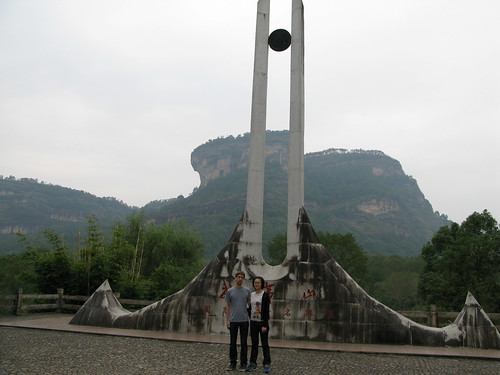
In the morning, we got some pumpkin porridge, you tiao, and some little green onion cakes. We met up with our driver, Mr. Zhou, and headed out to the main hiking / sightseeing area. This was beautiful, but full of tour groups. We skipped the really long hikes, because Louise's knees were bothering her, but did get to see a lot of rocks. Chinese people really like to look at rocks, say what they resemble, and tell stories about them. It's kind of weird. The area is incredibly beautiful, but in a very understated way.
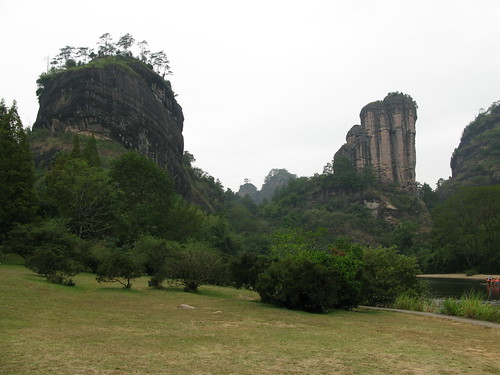
We were really lucky to have had some of our legwork done for us by Corax and Niisonge - Corax's posts (such as the ones here and here) on Cha Dao made me think that Wuyi would be a good place to visit, mostly because there's a more central focal point than most other tea producing areas, and I like the tea produced there. I used the same cab driver they used (Mr. Zhou), and Warren (Niisonge) was very helpful in answering my questions about Fujian and about getting vegetarian food here (he is vegetarian as well).
Anyway, after this, we decided to have some tea at the Wuyi Star factory store, which is at the base of the main hiking area. The woman who brewed our tea was talkative and nice, but kept blatantly lying about what number infusion we were on, and changing the subject when Louise brought it up. The tea was decent, but nothing mindblowing. The prices weren't as crazy as people say they are "up the mountain" (at least by US standards), but then again, it's all relative to the quality of the tea. We tried a Bái Jī Guān (白鸡冠) and a Dà Hóng Páo (大红袍).
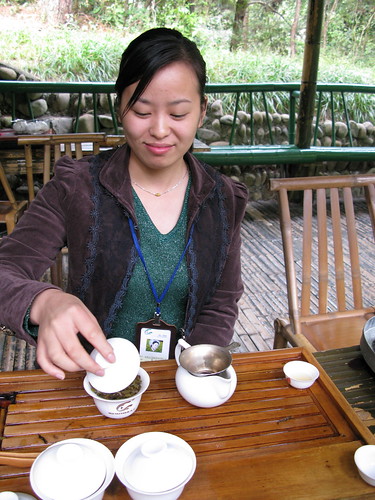
I've watched 3 different sales people brew yán chá (rock tea / cliff tea, named for the rocky cliffs of Wuyi Mountain) in the last week (1 in Shanghai, 2 here in Wuyishan)...
- All used 100 C (or very close to it) water, bringing the water back to a boil before almost every infusion. When we asked, the woman at this place said she did this all the time, not just to show off the tea under higher temperature conditions.
- I'd read that 2 rinses was standard in this area, but these people did 1 in most cases.
- Leaves were usually > 3/4 of the brewing vessel - almost to the top of the gaiwan (or completely to the top), with an almost instant pour. This is how I brew yán chá too, but the people who sit around and brew it all day are much faster on the draw - they have this cool move where they just kind of drop the lid on the gaiwan, and it floats into place. Then they tip the gaiwan over enough to get the extra water off the top.
- Sometimes, the brewer seemed to leave a little tea in the bottom of the chá hǎi between infusions. I've heard of people doing something similar (but with the brewing vessel) for green tea, but not sure if this is a trick to make it seem like the tea lasts longer than it does, or just a slightly different brewing technique.
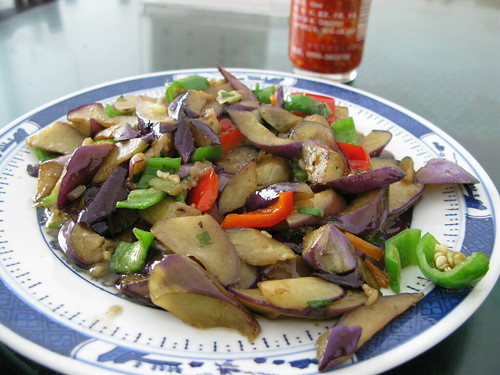
Then it was off to see the Dà Hóng Páo bushes themselves. Of course, as expected, the bushes themselves are not super exciting, but it was really fun to see all the other tea plants all over the place. It was not as far a walk as I imagined, and you're at least sort of close to the bushes.

Everyone says not to buy tea up the mountain, but we didn't even bother tasting the tea there right by the bushes.
There are tea plants all over the place... here are some ròu guì plants:

We stopped by a nearby temple that's off the same road. Even the temple in Wuyi sells tea (However, I'm pretty sure the monks don't actually make the tea).
Then it was off to get our train tickets back, and to head over to Mr. Zhou's family's tea operation. This was another area where having some of the legwork done for us was very handy - the main area has so many touristy tea shops (literally almost every shop in the tourist "downtown" area), and I imagine it's hard to get good tea for a good price over there, though maybe we'll check a couple out tomorrow. We checked out their tea processing equipment briefly - dryers (electric), roaster (wood charcoal), bruising apparatus, drying area, etc. There was warm tea sitting in some baskets that was incredibly fragrant and sweet.
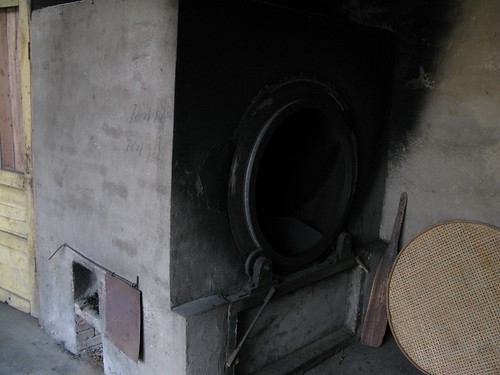
We spent a good 3 or so hours there, trying brew after brew of various yán chá - in order:
- Shuǐ Xiān (Water Sprite - 水仙)
- Dà Hóng Páo (Big Red Robe - 大红袍)
- Award Winning DHP (higher grade)
- 1993 DHP
- Gǔ Shù Chá (Ancient Tree Tea - 古树茶) (an old bush variety of theirs)
- Qiān Lǐ Xiāng (Thousand Miles Fragrant - 千里香) (I love BTH's, and wanted to try one that was for sure actually from Wuyishan)
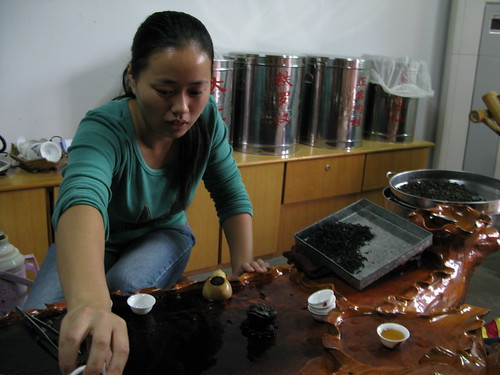
We were too tea-drunk and palate fatigued to try the Bái Jī Guān - maybe tomorrow. Overall, the lower grade DHP was the best tasting, though the higher grade teas had a much better aftertaste. For the price, though, the DHP was great, so I picked up 2 jin, as well as some of the Qiān Lǐ Xiāng. Perhaps I will get some more tea from there tomorrow. The other teas were good - nothing that really blew my mind, but all excellent. The aged DHP was a little more sour and less sweet than some of the aged teas I like.
For dinner, we went to one of those places that has all the ingredients sitting out front, and you tell them what you want them to cook. We decided to try a few types of local mushrooms (the area is famous for its mushrooms), and Louise also got a scrambled egg / omelette type thing with some sort of flower cooked inside, and some little fish (which were battered, seasoned, and fried). Once again, the food was fresh, flavorful, and delicious. Friends and family will be interested to know that I broke my diet just a little - I had my first (intentional) taste of egg in about 15 years - I had a few bites of Louise's eggs. There are chickens all over the place here, and while a lot of them may end up on the dinner table, it's a far cry from the way chickens are raised in the US, so I said what the hell.
I had been warned that people in Fujian eat a lot of wild stuff, and one or two of the restaurants we went to (the sort where all the ingredients are out front and you tell them which ones you want them to cook for you) had an actual small bear WITH fur still attached in the display case. Sorry folks - didn't get a picture of that. There were a fair amount of smallish mutt type dogs running around as well, and according to Mr. Zhou, some of the locals do catch these and eat them, though we didn't see them offered at any restaurants.
No comments:
Post a Comment